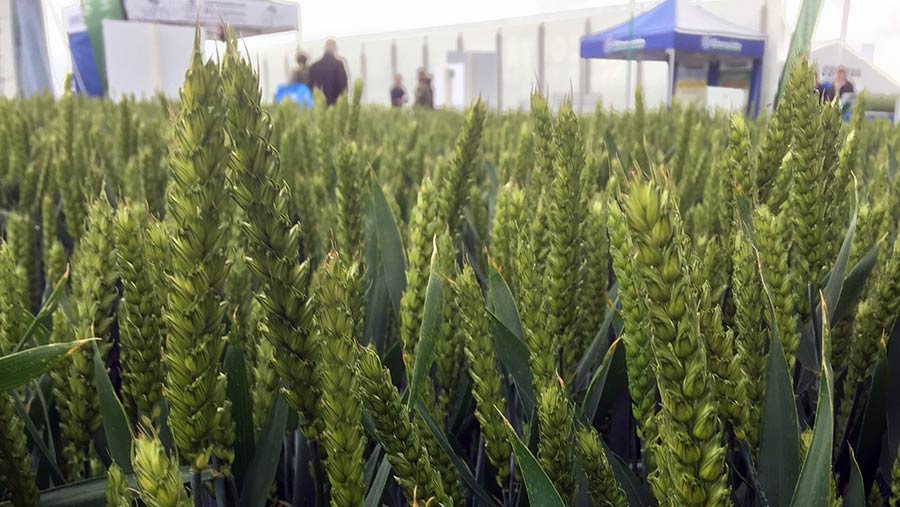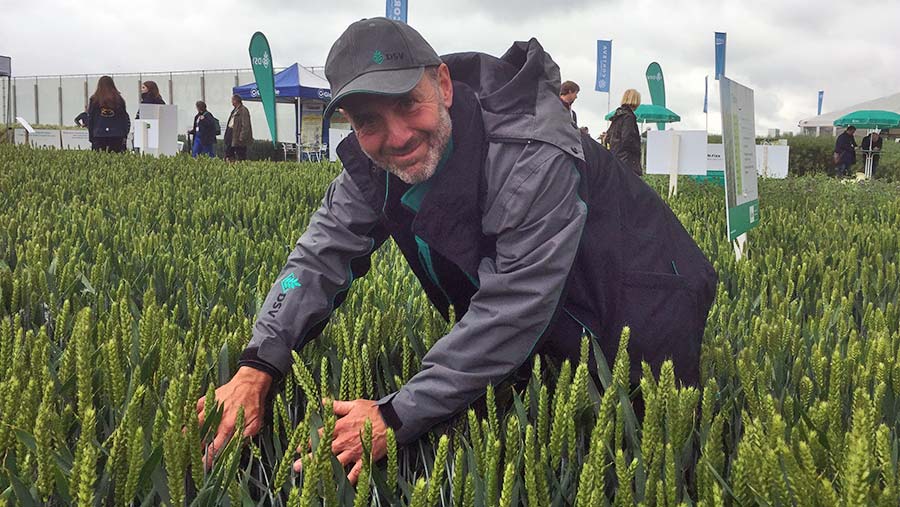Cereals 2019: Next-gen low-input wheat variety unveiled
 © Richard Allison/RBI
© Richard Allison/RBI The first quad-layer varieties of oilseed rape, and a feed wheat delivering an untreated yield of nearly 120%, were unveiled by DSV at the Cereals event.
Up for recommendation later this year, Theodore is the first of a new generation of a “farmer-friendly” wheats being developed by the breeder to be grown with minimal agronomic treatments.
“We are developing wheats which effectively use genetics to replace the sprayer, so as much disease and resilience as possible is built into the crop, rather than coming from constant and costly inputs,” said DSV managing director Mike Mann.
See also: More news from Cereals 2019
He highlighted that having a breeding station in a high septoria pressure area in north Oxfordshire meant varieties are tested more in the early stages.
National List trials show an untreated yield of 118% of control (untreated), compared with 93% for JB Diego and 95% for Santiago.

Mike Mann of DSV © Richard Allison/RBI
“It has a huge potential as a low-maintenance, high-yielding wheat for the future,” he said.
It has the highest septoria and yellow rust scores of the candidates, at 7.2 and 9, respectively.
Untreated crops of Theodore are actually looking better than other varieties that have received a full fungicide programme, Mr Mann said.
Future OSR varieties
Oilseed rape varieties that are cheaper to grow are also being offered, with the first quad-layer varieties entering the UK testing system.
Layering is where breeders add layers of disease resistance and physical properties.
Last December saw the recommendation of the company’s double-layer variety Temptation, and the triple-layer varieties Darling and Dazzler are candidates for later this year.
“The first [quad layer] is a high-output hybrid oilseed rape offering RLM7 phoma resistance, turnip yellows virus resistance, pod shatter and clubroot resistance,” said DSV’s Sarah Hawthorne.
The second quad-layer is a Clearfield variety with phoma, turnip yellows virus and pod shatter resistances.
Another development will be varieties with an average oil content of 50% in the next two years.
Ms Hawthorne pointed out that some were already hitting 50% in trials and said it won’t be long until varieties average this level.

